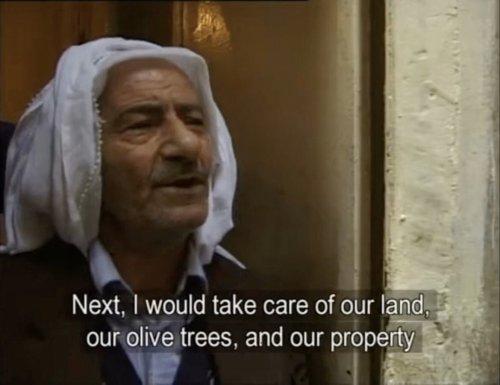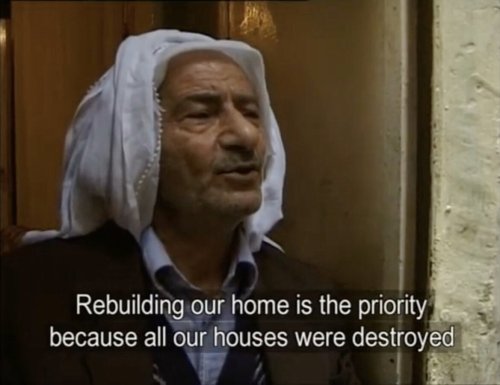A “forest” Is Not “good” Just Because There Are Many Trees: The Destruction Of Valdivian Temperate
A “forest” is not “good” just because there are many trees: The destruction of Valdivian temperate rainforest landscapes, their replacement with industrial monoculture tree plantations, what “forests” mean in popular imaginary.
————–
Landscapes are shaped over time by the changing imaginaries that result from new representations of nature and the value associated with it. […] [E]volving discourses […] have shaped the perception of the landscape in two socially and ecologically significant contexts in Chile. The first is the central-southern region of the country, a large portion of which is now devoted to commercial forestry plantations. […] The representation that was made of central-southern Chile in the 50’ and 60’ as a deforested and degraded land was the justification for promoting a new form of land occupation: the monoculture forest, designed and executed by a specific law. Forty years on from the passing of this law, the plantations of central-southern Chile have undergone a process of naturalization. In this case, the exaltation of nature has been permanent (before and after the changes doing by this law). The only thing that changes is the definition of nature, which ended up including forest plantations. That is, discourses influence perceptions and these lead to new practices […]. These estates have been consolidated with the help of policies implemented primarily during the second half of the twentieth century, and today form vast extensions of commercial monoculture forestry plantations.
H. Lefebvre makes an interesting point on this subject by underlining the idea of representations. The author claims that the notion of nature is a nostalgia, and that it lends itself to manipulation […]. What is this nature that lies at the heart of this discussion? Swyngedouw (2015) and Castree (2005, 2008, 2014) claim that [contemporary categorization of] nature […] has contributed strongly to the consolidation of a neoliberal approach to our relationship with our surroundings, strongly supported by notions such as governance, management, value attribution and services. […] Toward the end of the 1930s, there emerged a generation of agronomists concerned with the conservation of natural resources […]. In 1951 they launched a channel for promoting their ideas and interests: the Revista Forestal Chilena (Chilean Forestry Review). The publication made the case for the country’s “forestry vocation”, and emphasized the need for the industry to be developed. One year on, the timber producers’ trade association Corporación de la Madera (CORMA) was formed. […]
Besides aligning itself with the developmentalist discourse that predominated in the country at the time, CORMA introduced the (eminently determinist) idea that Chile was “a forest country”: that this was its nature, and that it was this activity which would be the source of its wealth and prosperity. This definition of a natural vocation considered the exploitation not only of “jungles” (native forest), but also of “artificial forests.” […] The president of the trade association, Julián Echavarri, expressed himself in similar terms in 1956, adding a certain nationalist flare to the forestry discourse […].
Later, with the advent of the military dictatorship (1973–1989), a new economic development strategy was adopted based on expansion of the export sector […] by means of an aggressive development policy embodied by Decree Law N. 701 of 1974, which established a series of forestation initiatives. The most important of these was a 75% subsidy on the cost of forestation. At the same time, development loans were offered by the Central Bank to stimulate private forestry […]. Meanwhile, State-owned forested areas were passed into the hands of forestry companies. […] The area planted with exotic species went from 576 thousand hectares in 1975 to almost 3.7 million hectares in 2014 […].
Meanwhile, for the people who spent their childhood in areas dominated by forestry operations, the plantations were a place of recreation and fantasy. […] For these generations, the pines are part of their landscape. […] Similarly, city dwellers, and those people who live in regions further to the north who have never had contact with other types of forest, also believe that these forests are natural. […] [T]hey place new value on these artificial forests. Many of the plantations were located on the western slopes of the Coastal Range, and with time they became forests with a sea view. […]
[T]he natural landscape that has been generated in this sector of Chile’s Coastal Mountain Range is the result of a mechanism of economic production that sought to recover the profitability and productivity of the land […]. In the context of extreme neoliberal economies like Chile, discourses which drive the need for or desirability of natural landscapes appear in fact to accentuate inequality and lead to a distancing from the very objectives of environmentally sustainable development.
————-
Enrique Aliste, Mauricio Folchi, and Andres Nunez. “Discourses of Nature in New Perceptions of the Natural Landscape in Southern Chile.” Frontiers in Psychology. 17 July 2018.
More Posts from Kakieoan and Others






robert wun ss23
How to Cope with Jealous Feelings
1. Understand what jealousy is. It’s a mixture of fear and anger – usually the fear of losing someone who’s important to you, and anger at the person who is “taking over”. Recognise that it’s a destructive and negative emotion - and often nothing good comes out of it.
2. Try and figure out why you’re feeling jealous. Is it related to some past failure that is undermining your ability to trust? Are you feeling anxious and insecure? Do you suffer from low self-esteem, or fear of abandonment?
3. Be honest with yourself about how your jealousy affects other people. Do friends or partners always have to justify their actions and thoughts, or always report on where they were, or who they were with? That kind of pressure is destructive in the end, and puts a strain on relationships.
4. Find the courage to tackle your feelings. Decide to question your jealousy every time it surfaces. That will enable you to take positive steps to manage your feelings in a healthier and more constructive way. Some possible questionsto ask yourself include: “Why am I jealous about this?”; “What exactly is making me feel jealous?”; “What or who am I afraid of losing?”; “Why do I feel so threatened?”
5. Work on changing any false beliefs that might be fueling your jealousy. Start this process by identifying the underlying belief, for example “If X leaves me, then I won’t have any friends”; “If Y doesn’t love me then no-one will ever want or love me”. Understand, that beliefs are often false – and that they can be changed through choice. If you change your belief, you change the way you feel.
6. Learn from your jealousy. Jealousy can help understand ourselves better – and teach us important lessons. For example, it’s natural to feel frightened when a relationship is new, and you don’t yet feel secure. This is normal and commonplace! Also, some people DO have a roving eye, and they may lack commitment in the longer term. Better you know that now, than later on.
7. Work on accepting and trusting yourself. That makes it easier to trust others, too, and lessens our tendency to feel jealous of others.










‘Children of Shatila’ (Lebanon, 1998) film by Mai Masri. In this scene the youth of the Palestinian refugee camp interview an elder with a video camera.

learning to take your life seriously - ask polly









Moss PNGs.
(1. 2. 3. 4. 5. 6. 7. 8. 9.)

I’ll stay in Today by Chukwu Adaeze
-
 fatehbaz liked this · 2 years ago
fatehbaz liked this · 2 years ago -
 soleilcoucoupe reblogged this · 4 years ago
soleilcoucoupe reblogged this · 4 years ago -
 politicslifeandthings reblogged this · 4 years ago
politicslifeandthings reblogged this · 4 years ago -
 indigenous-angel reblogged this · 4 years ago
indigenous-angel reblogged this · 4 years ago -
 posthastelaced liked this · 4 years ago
posthastelaced liked this · 4 years ago -
 ephimerereality liked this · 4 years ago
ephimerereality liked this · 4 years ago -
 lochnessbian liked this · 4 years ago
lochnessbian liked this · 4 years ago -
 folkheroine reblogged this · 4 years ago
folkheroine reblogged this · 4 years ago -
 italia-v liked this · 4 years ago
italia-v liked this · 4 years ago -
 dykevaporeon reblogged this · 4 years ago
dykevaporeon reblogged this · 4 years ago -
 dykevaporeon liked this · 4 years ago
dykevaporeon liked this · 4 years ago -
 ohgeeeoo liked this · 4 years ago
ohgeeeoo liked this · 4 years ago -
 solaslightguy liked this · 4 years ago
solaslightguy liked this · 4 years ago -
 thisblockhasnoturtle reblogged this · 4 years ago
thisblockhasnoturtle reblogged this · 4 years ago -
 thisblockhasnoturtle liked this · 4 years ago
thisblockhasnoturtle liked this · 4 years ago -
 ecology-of-the-inhuman reblogged this · 4 years ago
ecology-of-the-inhuman reblogged this · 4 years ago -
 ecology-of-the-inhuman liked this · 4 years ago
ecology-of-the-inhuman liked this · 4 years ago -
 shetillstheearth liked this · 4 years ago
shetillstheearth liked this · 4 years ago -
 toystorysong reblogged this · 4 years ago
toystorysong reblogged this · 4 years ago -
 toystorysong liked this · 4 years ago
toystorysong liked this · 4 years ago -
 lacommunedeparis reblogged this · 4 years ago
lacommunedeparis reblogged this · 4 years ago -
 homeplanets reblogged this · 4 years ago
homeplanets reblogged this · 4 years ago -
 yesitsanusha liked this · 4 years ago
yesitsanusha liked this · 4 years ago -
 kakieoan reblogged this · 4 years ago
kakieoan reblogged this · 4 years ago -
 kakieoan liked this · 4 years ago
kakieoan liked this · 4 years ago -
 sometimeslayla liked this · 4 years ago
sometimeslayla liked this · 4 years ago -
 chaos-coming reblogged this · 4 years ago
chaos-coming reblogged this · 4 years ago -
 punkplantparent liked this · 4 years ago
punkplantparent liked this · 4 years ago -
 tineyandrowan liked this · 4 years ago
tineyandrowan liked this · 4 years ago -
 blazed-dolphin liked this · 4 years ago
blazed-dolphin liked this · 4 years ago -
 blackwoolncrown reblogged this · 4 years ago
blackwoolncrown reblogged this · 4 years ago -
 alligatorpig reblogged this · 4 years ago
alligatorpig reblogged this · 4 years ago -
 alligatorpig liked this · 4 years ago
alligatorpig liked this · 4 years ago -
 glare-softly reblogged this · 4 years ago
glare-softly reblogged this · 4 years ago -
 passengerpigeons liked this · 4 years ago
passengerpigeons liked this · 4 years ago -
 treadlightlymydarling liked this · 4 years ago
treadlightlymydarling liked this · 4 years ago -
 a-isforanxiety reblogged this · 4 years ago
a-isforanxiety reblogged this · 4 years ago -
 ohwhatevers reblogged this · 4 years ago
ohwhatevers reblogged this · 4 years ago -
 kakorikos reblogged this · 4 years ago
kakorikos reblogged this · 4 years ago -
 dracuwulaura liked this · 4 years ago
dracuwulaura liked this · 4 years ago -
 dionysusof0 reblogged this · 4 years ago
dionysusof0 reblogged this · 4 years ago -
 jewelsfern liked this · 4 years ago
jewelsfern liked this · 4 years ago

